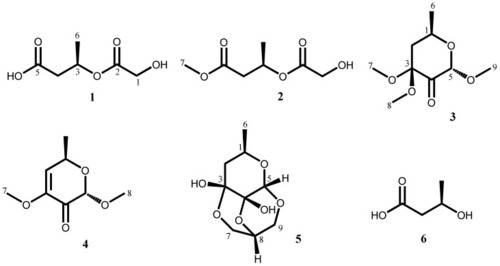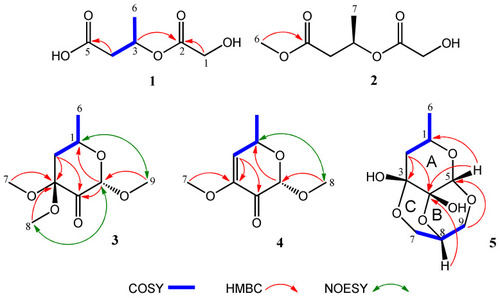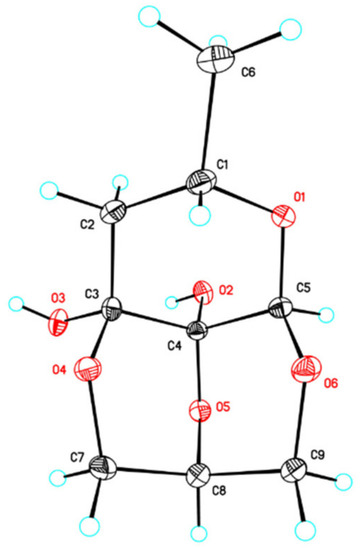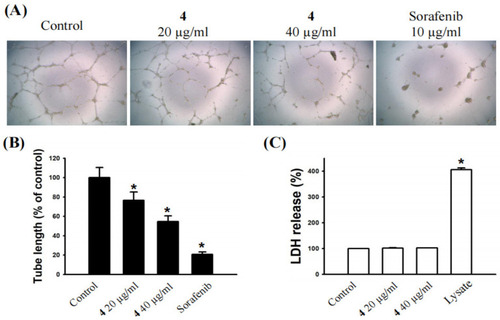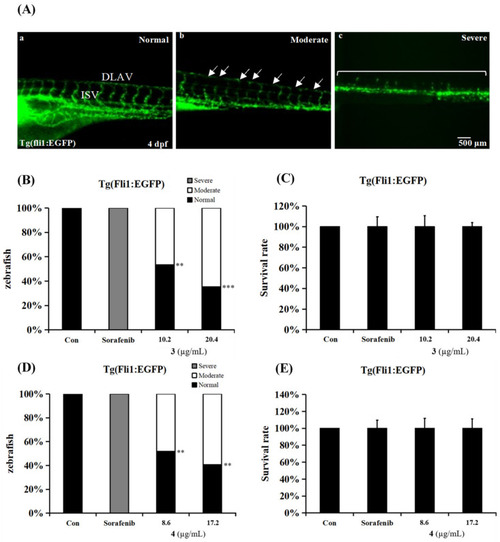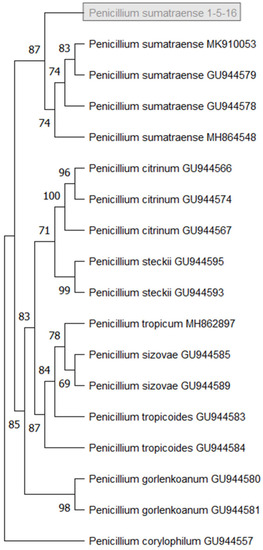- Title
-
Chemical Constituents and Anti-Angiogenic Principles from a Marine Algicolous Penicillium sumatraense SC29
- Authors
- Hsi, H.Y., Wang, S.W., Cheng, C.H., Pang, K.L., Leu, J.Y., Chang, S.H., Lee, Y.T., Kuo, Y.H., Huang, C.Y., Lee, T.H.
- Source
- Full text @ Molecules
|
Chemical structures of 1–6. |
|
Key COSY, HMBC, and NOESY of compounds 1–5. |
|
Ortep diagram of 5. |
|
Effects of penisterine D (4) on tube formation and cytotoxicity of human EPCs. Cells were treated with the indicated concentrations of penisterine D and sorafenib for 24 h. (A) The inverted phase-contrast microscope was utilized for recording tubular morphogenesis. (B) The tube formation of EPCs was quantified by measuring the length of tubes by Image-J. (C) Cells were treated with 4 for 24 h and cytotoxicity was determined using the LDH assay. Data represent the mean ± SEM. * p < 0.05, compared with the control group. |
|
Penisterine C (3) and penisterine D (4) exert anti-angiogenic capacities in vivo. (A) Representative images of the trunk vasculature in Tg (fli1:EGFP) zebrafish embryos incubated with compounds or sorafenib at 4 days post-fertilization (dpf). Arrows indicate impaired at intersegmental vessel (ISV) and dorsal longitudinal anastomic vessel (DLAV). (B) Quantitative analysis presents percentage of fish embryos incubated with 3 with defective vasculature. ** p < 0.01, and *** p < 0.001 compared with the control group. (C) Quantitative analysis presents percentage of survival rate of fish embryos incubated with 3. (D) Quantitative analysis presents percentage of fish embryos incubated with 4 with defective vasculature. ** p < 0.01 compared with the control group. (E) Quantitative analysis presents percentage of survival rate of fish embryos incubated with 4. The zebrafish treated with 1% DMSO was used as a negative control, and 10 µg/mL sorafenib was used as a positive control. |
|
Maximum parsimonious tree based on sequences of rDNA ITS region. Isolated strain SC29 is highlighted in the grey box. |

